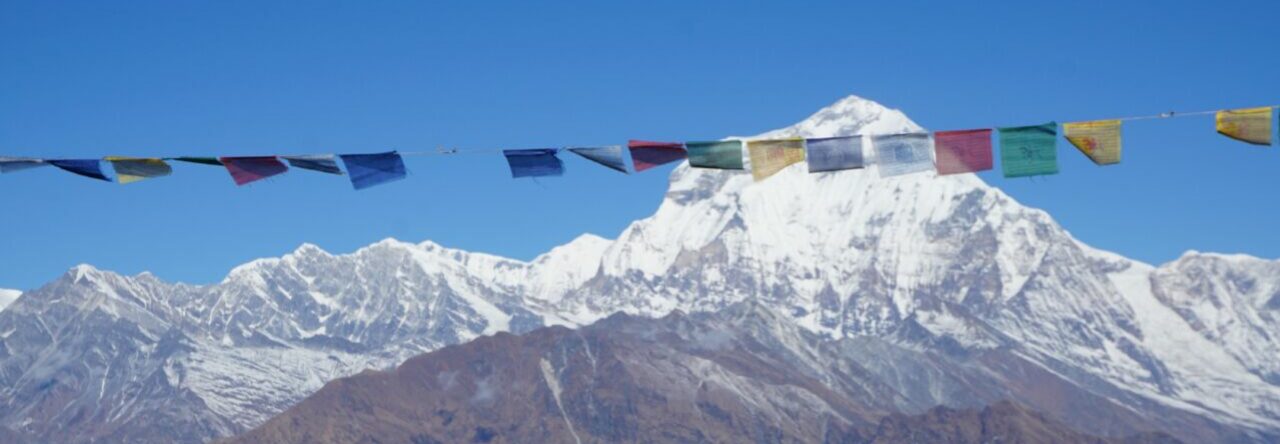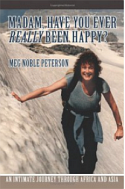These are a few of the features of this exotic place. I could write an entire piece just on some of my bus rides and on finding the right bus station in Leh. Buses come in all shapes and sizes and degrees of (dis)comfort, and I love them! I’ve been dropped off in the middle of nowhere and always found someone who can lead me to a cafe where someone else has a cell phone and can find a friend or tell me when the next bus arrives (then you run like crazy to catch it and hope to find a seat). I was waiting for a new friend, Stanzin Lhwang, whom daughter Cary made contact with in the caves of Tso Pema last summer, and met six Kahmiris from Kargil and Srinigar, here to work on broadband installations. We started conversing–everything from business to politics–and they offered me a ride this weekend to Kargil to explore parts of Kashmir. How I would have loved to go, but this is the time I’ll be starting on a four day trek with Lhwang to see if I’m fit for an eight day over two high passes when James arrives. I don’t know. This altitude is still causing me to puff up the hills! I think I’ve walked at least six miles a day, dodged a few hundred buses and taxis (agility comes with age and experience), and eaten enough dhal, rice, chapatti, and paneer to last a lifetime. I’m even finding the thought of a hamburger exciting! And a salad…well, that sends me into a swoon.
First, a few pointers for those of you wishing to use the quaint and colorful buses of northern India. I will admit that I didn’t like the night bus from Majnu Ka Tilla to Dharamsala last year, but these daytime buses in Ladakh are lots of fun. First, you need to bring small packages of tissues, for someone around you is invariably going to have a cold, and is very grateful to substitute a good blow for constant sniffing. Then you should expect that many people are going to want to practice English and get very excited when you cooperate. It’s also a good feeling to be appreciated for something you learned as a child and for which you deserve no credit. Next, you need to really love babies. They are many and they are adorable. You must enjoy making faces, but if that isn’t your specialty they’ll stare wide-eyed at you, anyway, because you look so different. And keep that repertoire of folk and nonsense songs handy. The mothers will love you and the babies respond with appropriate gurgling. If you really get on a roll, some other babies may be placed in your lap to get in on the act.
Be flexible and show no shock when a five gallon can of gasoline is placed next to your seat and covered by a 50 lb. sack of basmati rice. Extra baggage is placed in the aisle and the conductor…a very patient man…carefully walks over it to collect the 20 rupee fare individually. He also stands on the steps with the door open and signals by whistling or shouting what is going on along the way. Returning from Nimmo last Monday I happened onto a bus from Senegal, which had been traveling with its load (very tired families) for three days. I was put in the front cab with others who sat on the engine cover and draped over one another. Someone saw my camera and everyone wanted a picture. Then they motioned to the driver to pose. I was horrified, for we were on a high curve above an abyss, and the last thing the driver needed was a distraction. But it was a jolly party with lots of horseplay. This time I was left by the roadside on the outskirts of Leh. Fortunately, I had noticed that the smaller buses went to the central station, so hailed one filled to overflowing and was ushered up the aisle. An adorable Buddhist lady with a prayer wheel in her hand took my pack and insisted that I squeeze in next to her and a child. She wouldn’t think of my standing. Not a word was spoken. Just friendliness asking for nothing in return.
I’ve moved to a new and quieter and less expensive place, The Goba Guest House. My room has a view of the Shakti Stupa and Leh Palace, and the roof off which my room is situated has a view of the entire mountain range. I can never remember whether it’s the Indian Himalaya, the Ladakh Range, or the Karakoram, part of the consequence of being directionally and geographically challenged. But I know the sun comes up over those gorgeous hills and that’s good enough for me. The weather is very sunny, but can change to cold rain or snow in a moment and back to sun the next. On our trip to the famous Lake Pangong, over roads that made your wish to sink into a coma until it was over, it was sunny at the lake, but snowed tiny ball-like sleet after lunch. On this trip several days ago, I became acquainted with Mark, a young Englishman who plans to teach ESL at the Thiksay Monastery near Leh, an Italian woman, Francesca, who has been a social worker in Calcutta for a year, a Frenchman, Eduard, who has been teaching French and is now headed back to Paris, and a Calcutta business man, Munoj. What a party we made! The lake, about 130 km long and part in China, has no outlet, so is very salty. Nothing will grow in it, but the colors change with the slant of the sun and the convoluted mountains come right down to its shores. The men enjoyed skipping flat rocks that rim the shore. Boys will be boys forever! This is a 13-hour drive over the Chang La, the third hghest pass in Ladakh (17,500 ft.). After such a perilous ride we had all bonded, and spent the next evening in a farewell party for Mark and Munoj with a new friend Isaac, whom we had met that afternoon at the showing of the film based on the book, Ancient Futures, at the Woman’s Alliance in Leh. A powerful movie with a powerful discussion afterwards. Our two favorite restaurants so far are the Leh View in town and Cafe Jeevan on the Changspa Rd.
A word about the trip I took the last two days. I had hoped to trek into the Nubra Valley, but after reading the altitudes of the various mountain passes, I opted for a jeep ride…jeeps being the wonderful and ubiquitous Toyota Land Cruisers that Cary and I became acquainted with in Tibet. These are tough babies and the roads are unbelievably bad once you leave the checkpoint at South Pulu. All of these roads were built for the military and permits are required for anyone traveling the route. The valley is full of flowers and is velvet green starting in late June, but now it is a vast desert with every-changing sand color, sparse vegetation, and mountains with the most unusual striations and shapes and forms you can imagine. I went crazy taking pictures, but they all pale in comparison to the real thing. As at Pangong Lake, the roads are banks of switchbacks at intervals down the mountains–so narrow that a horn was required around most of the hairpin turns.
The Nubra Valley is a sensitive border region and was finally opened to foreigners in 1994. The two-day trip over the highest motorable road in the world (18,380 ft.), the Khardung La (pass), is one of the most frightening I’ve ever experienced, including those wild rides in Nepal and Tibet. No guard rails for the most part, and you just keep climbing over the narrow roads until you reach overhanging snow and icicles that sparkle in the sun. It’s like riding in a tunnel flanked by snow sculptures. A few times we met trucks and it’s a miracle that we didn’t plummet over the side. It has been unnerving to me to get used to driving on the left, especially when the left is clilffside.
It took three hours from Leh to cover the 39 km. to the top of the pass, but the views of the Zanskar Mountains were worth it! We were 100 meters higher than Everest Base Camp and 795 m.higher than Mont Blanc. And I felt it! This whole area is characterized by deep, sheer-sided valleys, high mountains, many still snow-covered, and long glaciers. The highest peak in Ladakh is Saser Kangri (25,165 ft.) and the longest glacier is Siachem Glacier (70 km.). It is still the scene of fighting between India and Pakistan.
After overnighting at the Snow Leopard Guest House in Hunder, we continued on to Sumoor to visit the Samstamling Monastery and view the Shyok and Nubra Rivers that are sandwiched between the Karakoram Mountains and the Ladakh Range. Fertile villages are scattered along these two valley floors. We eschewed the desert camel rides. What do they think we are…tourists?
Our two new friends on the trip were Marco and Karin, two charming teachers of handicapped and special needs children from Karlsrule, Germany. Francisca and I left them in Hunder and spent the morning climbing up a steep, rocky switchback trail to two old temples on the way to an abandoned gompa. We were able to peer into these ancient rooms and could see that they were still being tended by the monks of the Hunter Gompa, which could be reached by road, and contained age-old frescoes in the Kashmiri tradition.
The highlight of the trip was a visit the day before to the Diskit Gompa perched on a hillside, 200 meters above the village. It was comprised of multiple temples on many levels. The monks were friendly and showed us several of the temples, all with replicas of the Buddha, and beautiful wall paintings, thousands of years old. I was overwhelmed with emotion when one of the monks offered to light a butter candle in memory of Christopher, whose 54th birthday would have been the next day, May 16th.
May is a month when our entire family thinks of Christopher…his birth and his death. I feel especially privileged and comforted to be in a place of continuing spiritual awareness and practice, and Buddhist belief in the continuation of the human spirit.


manoj
Hey Meg…. You got my name , town and profession all wrong….its manoj menon, lawyer from Chennai(madras)….well when you meet as many people as you do, such slips are acceptable!!!!….. manoj